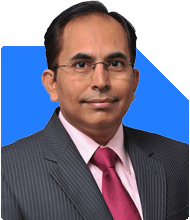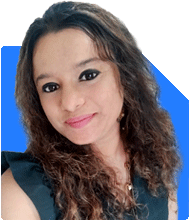Dear Sir
I am around 60 yrs of age and retiring after 3 months. My monthly expenses is around 200,000 INR per month. In order to lead same lifestyle how much corpus is required. Please do advice how we need to invest in various FDs, MFs and PPFs, etc. We donot have any EMI as such. Look forward hearing from you.
Deepa
Ans: You are doing the right thing by thinking ahead. Retirement is a new phase. With the right planning, it can be a peaceful one.
You are close to retirement. You wish to maintain a monthly lifestyle expense of Rs 2 lakh. That means Rs 24 lakh every year. You also have no EMIs. This is very good. Let’s plan from a 360-degree perspective.
Let’s assess your retirement lifestyle needs, required corpus, and ideal investments in simple steps.
?
Understanding Your Retirement Lifestyle
You plan to retire in 3 months. This is a critical stage to plan calmly.
?
Monthly expenses are Rs 2 lakh. This shows a dignified lifestyle with comfort.
?
No EMIs means you start with a clean slate. Very positive foundation.
?
You wish to retain the same lifestyle. That means the corpus must beat inflation.
?
Post-retirement income should be regular, low-risk, and tax-efficient.
?
Liquidity must be available. Health care needs can come up anytime.
?
You must plan for at least 25-30 years post retirement. Life expectancy is rising.
?
Expenses will rise every 5-6 years. So plan to beat inflation.
?
Your focus should be on safety, steady income, and flexibility.
?
Required Retirement Corpus: Assessment
Based on your Rs 2 lakh/month, yearly need is Rs 24 lakh.
?
If we consider 25 years of retirement, that’s Rs 6 crore in today’s money.
?
But we must consider inflation. In 5 years, Rs 2 lakh will feel like Rs 2.5–3 lakh.
?
Hence, you need a larger retirement corpus. Around Rs 7 to 8 crore would be comfortable.
?
This will help maintain your lifestyle and tackle medical or unexpected needs.
?
If corpus is less than Rs 7 crore, then we need to plan smarter.
?
Use diversification. Use multiple instruments. Create buckets based on time horizon.
?
Don’t put all in one place. You need a good balance of risk and safety.
?
Asset Allocation Strategy After Retirement
First focus is capital protection.
?
Second focus is monthly income.
?
Third focus is inflation beating growth.
?
Split your corpus into 3 parts: Short term, Medium term, and Long term buckets.
?
Bucket 1 – Short-Term (Next 3 years of expenses)
Allocate around Rs 70–75 lakh.
?
Keep in bank FDs, sweep-in FDs, and ultra-short-term mutual funds.
?
This part gives you monthly withdrawal facility. It is liquid and safe.
?
Invest in FDs with quarterly interest payouts for steady flow.
?
Choose banks with good credit ratings, preferably large private or PSU banks.
?
Ultra-short-term mutual funds offer 6-7% and are more tax efficient.
?
This bucket is not meant for growth. Only for stability and access.
?
Bucket 2 – Medium-Term (4 to 10 years)
Allocate around Rs 2.5 to 3 crore.
?
Invest in conservative hybrid mutual funds and balanced advantage funds.
?
These funds adjust equity-debt mix dynamically. Less risky than equity funds.
?
Returns can be in the 8–10% range. This beats inflation comfortably.
?
Use SWP (Systematic Withdrawal Plan) to take monthly amounts.
?
You can take Rs 40,000 to Rs 50,000 monthly from this bucket.
?
SWP is more tax efficient than FD interest.
?
Long term capital gains above Rs 1.25 lakh/year taxed at 12.5%.
?
STCG taxed at 20%. So holding for long is better.
?
Regular plans through MFDs with CFP support give better tracking and guidance.
?
Avoid direct funds unless you can do in-depth review regularly.
?
Regular funds give access to advisor support and portfolio rebalancing.
?
Bucket 3 – Long-Term Growth (10+ years)
Allocate Rs 3 to 3.5 crore here.
?
Use well-diversified actively managed mutual funds.
?
Choose from large cap, large & mid cap, flexi cap, focused, or multi-asset.
?
These funds help grow the corpus and beat long-term inflation.
?
Avoid index funds. They blindly follow the index without active stock selection.
?
Actively managed funds can protect better during market falls.
?
A good fund manager makes selective calls. This gives better results.
?
Rebalance your portfolio every 2 years with a Certified Financial Planner.
?
Use dividend reinvestment or growth option. Withdraw only when needed.
?
Don’t over-withdraw. This is your retirement anchor.
?
PPF, Senior Citizen Saving Scheme, and Post Office Options
PPF is good, but has 15-year lock-in. At 60, liquidity becomes concern.
?
If you already have PPF account, let it mature. Extend in blocks of 5 years only if needed.
?
SCSS is suitable. Offers attractive interest. Limit is Rs 30 lakh per individual.
?
Safe for a portion of retirement corpus. Good for capital preservation.
?
Post Office Monthly Income Scheme can be considered. But rates change.
?
Don’t lock too much in long-tenure options. You need liquidity too.
?
Tax Planning After Retirement
Plan your income smartly to stay in lower tax brackets.
?
FDs are taxed at slab rates. Plan accordingly.
?
Mutual funds offer better tax efficiency.
?
Use SWP from equity mutual funds for steady tax-friendly income.
?
For debt mutual funds, taxation is as per your slab. Use with planning.
?
Spread your withdrawals across financial years to manage tax.
?
Submit Form 15H if your taxable income is below limit.
?
Take help from your MFD or CFP for tax-efficient withdrawal plans.
?
Health Insurance and Emergency Fund
Keep Rs 20 to 25 lakh separately for emergencies.
?
Maintain health insurance even after retirement.
?
Take super top-up plans if base policy is small.
?
Don’t depend fully on employer’s insurance. It ends with retirement.
?
Medical costs can wipe out corpus if not planned.
?
Also keep Rs 3–5 lakh in savings account for minor needs.
?
Estate Planning: Important But Often Missed
Prepare a clear and updated Will.
?
Nominate family members in all financial accounts.
?
Inform spouse or children about investments and bank details.
?
Keep copies of all insurance, MF, FD and other assets safely.
?
You are planning for your family’s future. Keep them informed.
?
Investment Discipline and Annual Review
Review your plan every year. Retirement is not a one-time setup.
?
Adjust for inflation and market movements.
?
Rebalance portfolio with help of a CFP.
?
Stay invested even during market falls. Don’t panic and withdraw.
?
Withdraw only what is needed monthly.
?
Maintain some cash buffer to avoid early redemption.
?
Long-term growth needs patience and discipline.
?
Avoid These Common Retirement Investment Mistakes
Don’t invest everything in FDs. Returns won’t beat inflation.
?
Don’t put full amount in equity either. Risk is high.
?
Avoid direct mutual funds. Regular plans give guidance and support.
?
Don’t go for ULIPs, investment insurance, or traditional plans for returns.
?
Don’t fall for high-return promises from unknown agents.
?
Never lend big amounts to relatives without documentation.
?
Avoid complex structured products. Keep it simple and liquid.
?
Don’t ignore medical and long-term care planning.
?
Avoid long lock-in plans. Flexibility is more important now.
?
Don’t take new loans unless absolutely needed.
?
Finally
Deepa, you are entering a new phase in life. A well-planned one can be peaceful.
You’ve lived responsibly. Now it is time to plan your wealth for protection and income.
Start with safety. Then add income-generating instruments. Keep some for growth.
Diversify using the 3-bucket method. Review every year. Stay informed and calm.
With the right approach, you can enjoy 25+ years of peaceful retirement.
Appreciate your clarity and foresight. More power to your next chapter.
?
Best Regards,
?
K. Ramalingam, MBA, CFP,
?
Chief Financial Planner,
?
www.holisticinvestment.in
https://www.youtube.com/@HolisticInvestment





























